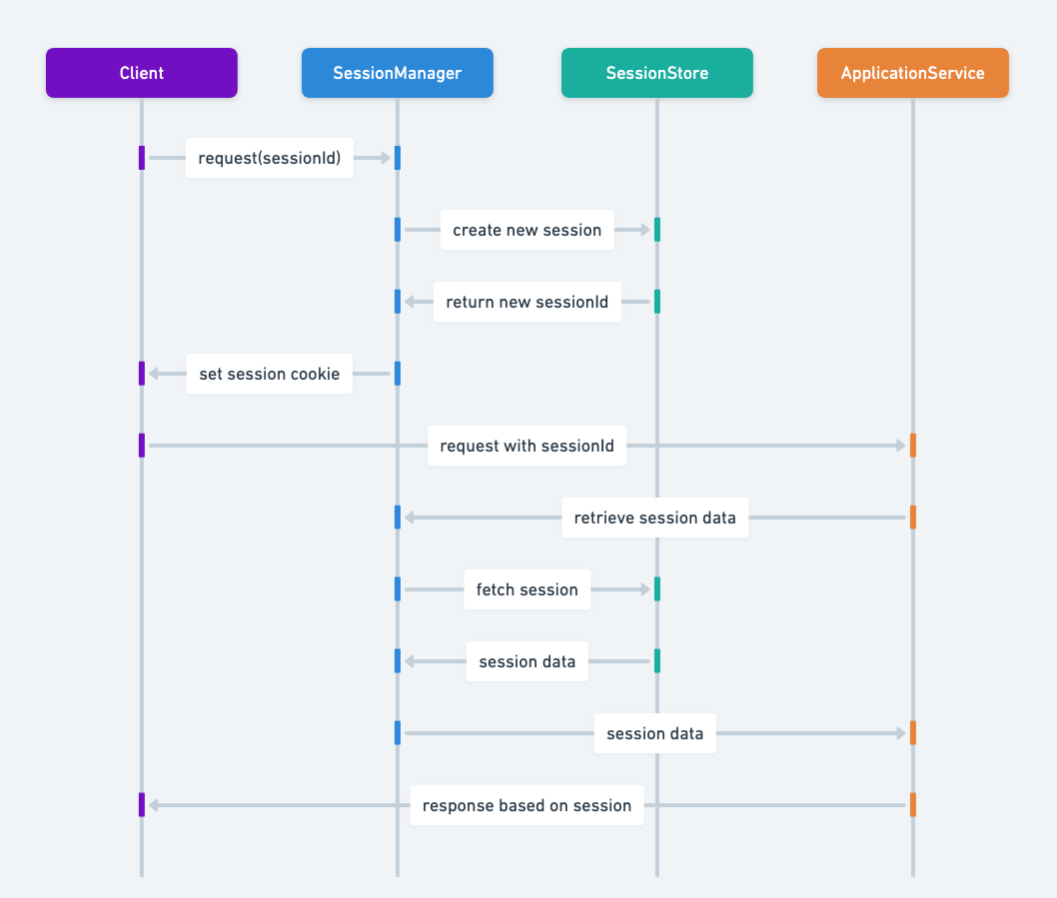Client-Session Pattern in Java: Streamlining Client Data Across Sessions
Also known as
- User Session
Intent of Client Session Design Pattern
The Client Session design pattern is essential for web development involving client-server interactions. It aims to maintain a user's state and data across multiple requests within a web application, ensuring a continuous and personalized user experience. This pattern helps in creating a seamless user experience by managing user state and data effectively across different sessions, crucial for modern web applications.
Detailed Explanation of Client Session Pattern with Real-World Examples
Real-world example
A real-world example of the Client Session pattern is a library membership system. When a member logs in, the system starts a session to track their borrowing activities. This session holds data such as the member's ID, current borrowed books, due dates, and any fines. As the member browses the catalog, borrows books, or returns them, the session maintains this stateful information, ensuring the member's interactions are consistent and personalized until they log out or the session expires. This approach helps the library system manage user-specific data efficiently across multiple interactions, providing a seamless and personalized experience for the members.
In plain words
The Client Session pattern manages user-specific data across multiple requests within a web application to maintain continuity and personalization.
Wikipedia says
The client-server model on Wikipedia describes a system where client devices request services and resources from centralized servers. This model is crucial in web applications where client sessions are used to manage user-specific data across multiple requests. For example, when a bank customer accesses online banking services, their login credentials and session state are managed by the web server to maintain continuity of their interactions.
Sequence diagram

Programmatic Example of Client Session Pattern in Java
The Client Session design pattern is a behavioral design pattern that maintains a user's state and data across multiple requests within a web application, ensuring a continuous and personalized user experience. This pattern is commonly used in web applications where user-specific data needs to be managed across multiple requests.
In the given code, we have a Server class and a Session class. The Server class represents the server that processes incoming requests and assigns sessions to clients. The Session class represents a session that is assigned to a client.
// The Server class represents the server that processes incoming requests and assigns sessions to clients.
public class Server {
private String host;
private int port;
public Server(String host, int port) {
this.host = host;
this.port = port;
}
// Other methods...
// This method returns a new session for a client.
public Session getSession(String name) {
return new Session(name, "ClientName");
}
// This method processes a request from a client.
public void process(Request request) {
// Process the request...
}
}
// The Session class represents a session that is assigned to a client.
public class Session {
private String id;
private String clientName;
public Session(String id, String clientName) {
this.id = id;
this.clientName = clientName;
}
// Other methods...
}In the main method, we create an instance of Server, create two sessions for two different clients, and then pass these sessions to the server in the request along with the data. The server is then able to interpret the client based on the session associated with it.
public class App {
public static void main(String[] args) {
var server = new Server("localhost", 8080);
var session1 = server.getSession("Session1");
var session2 = server.getSession("Session2");
var request1 = new Request("Data1", session1);
var request2 = new Request("Data2", session2);
server.process(request1);
server.process(request2);
}
}In this example, the Server class is responsible for creating and managing sessions for clients, and the Session class represents the client's session. The Request class represents a request from a client, which includes the client's session and data. The server processes the request based on the client's session.
Running the program produces the following console output:
19:28:49.152 [main] INFO com.iluwatar.client.session.Server -- Processing Request with client: Session1 data: Data1
19:28:49.154 [main] INFO com.iluwatar.client.session.Server -- Processing Request with client: Session2 data: Data2When to Use the Client Session Pattern in Java
Use the client state pattern when:
- Web applications requiring user authentication and authorization.
- Applications needing to track user activities and preferences over multiple requests or visits.
- Systems where server resources need to be optimized by offloading state management to the client side.
Real-World Applications of Client Session Pattern in Java
- E-commerce websites to track shopping cart contents across sessions.
- Online platforms that offer personalized content based on user preferences and history.
- Web applications requiring user login to access personalized or secured content.
Benefits and Trade-offs of Client Session Pattern
Benefits:
- Improved server performance by reducing the need to store user state on the server.
- Enhanced user experience through personalized content and seamless navigation across different parts of the application.
- Flexibility in managing sessions through various client-side storage mechanisms (e.g., cookies, Web Storage API).
Trade-offs:
- Potential security risks if sensitive information is stored in client sessions without proper encryption and validation.
- Dependence on client-side capabilities and settings, such as cookie policies, which can vary across browsers and user configurations.
- Increased complexity in session management logic, especially in handling session expiration, renewal, and synchronization across multiple devices or tabs.
Related Patterns
- Server Session: Often used in conjunction with the Client Session pattern to provide a balance between client-side efficiency and server-side control.
- Singleton: Ensuring a single instance of a user's session throughout the application.
- State: Managing state transitions in a session, such as authenticated, guest, or expired states.